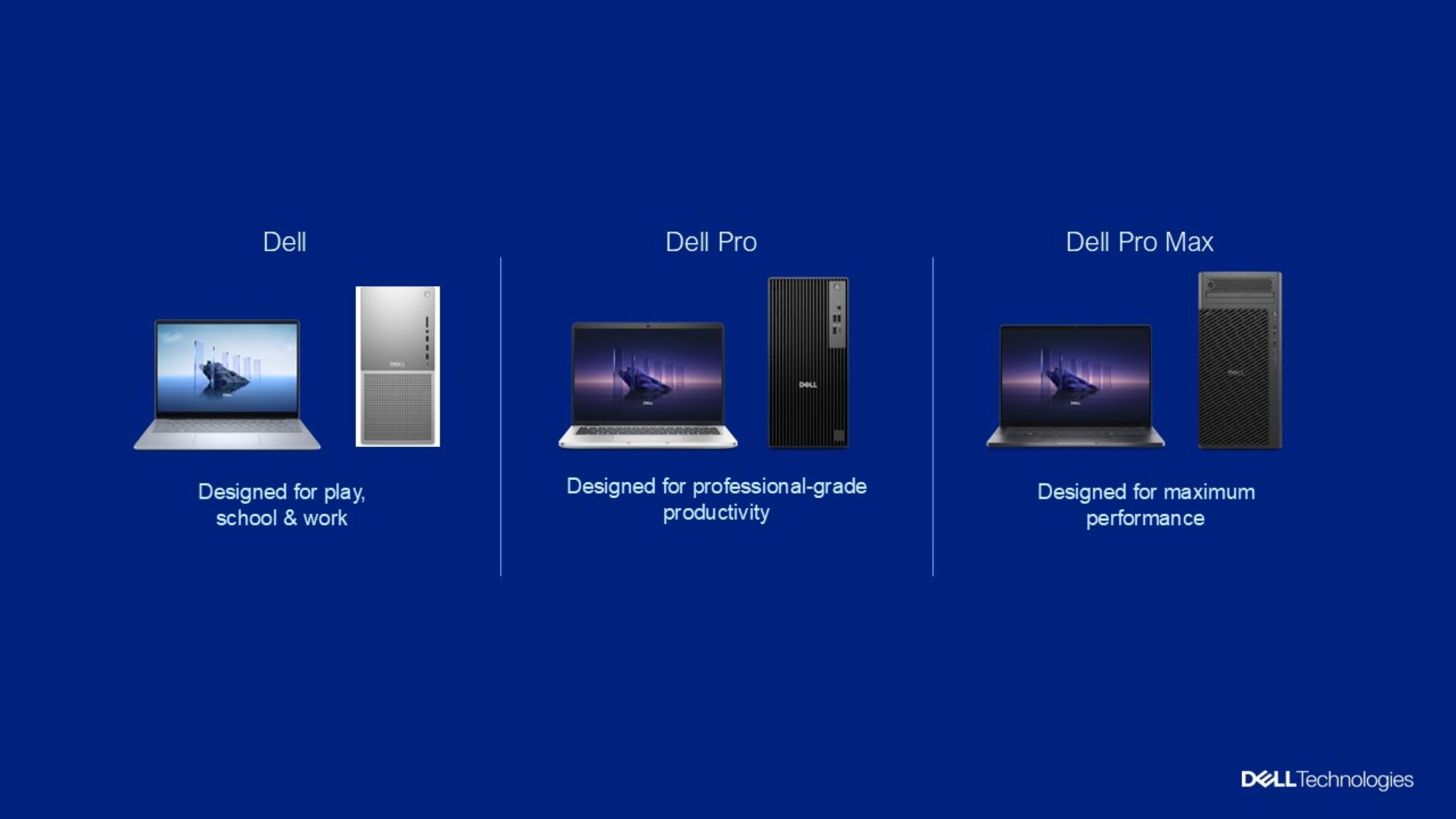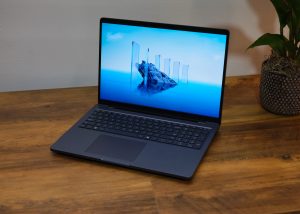 INFRA
INFRA
 INFRA
INFRA
 INFRA
INFRA
Dell Technologies Inc. is using the CES consumer electronics show in Las Vegas today to announce a broad streamlining of its brand portfolio and new personal computers and monitors addressing uses ranging from schoolwork to artificial intelligence development to high-end design.
The company also said it’s expanding its relationship with Advanced Micro Devices Inc. to include the chip maker’s Ryzen Pro AI processors across its product line.
The simplified product lineup does away with the existing Inspiron, XPS, G Series, Vostro, Latitude, OptiPlex and Precision brands in favor of three aimed at different categories of use. The Alienware line of gaming machines will retain its current brand identity.
The basic Dell brand targets low-end applications such as school and office work. The Dell Pro line has advanced management features for enterprise use and portability. The Dell Pro Max series is aimed at performance-intensive tasks like AI training and computer-aided design. Each series includes accompanying displays, accessories and services for the target use case.
“We went from eight different sub-brands with mostly made-up words to very descriptive words anchored around making it clear which product would be best for the use case of the customer,” said Kevin Terwilliger, general manager of commercial, consumer and gaming PCs. “The [previous] tiers were very complicated. We believe moving to this new structure will help customers find the right product.”
Executives cited Accenture plc research that found that as many as three-quarters of buyers walk away from purchases because they are overwhelmed by information.
“Our research told us that customers prefer names that are easy to remember and easy to pronounce,” said Jeff Clarke, Dell’s chief operating officer. “Does anybody know what an Inspiron or an OptiPlex is?”
In line with the rebranding, Dell is also announcing new desktop and portable models in its AI PC lineup. The Dell Pro models offer the option of Intel Corp.’s Core Ultra (Series 2) and AMD Ryzen processors, both of which feature an integrated neural processing unit and graphics processing unit as well as a CPU. An NPU is a specialized hardware accelerator designed for AI and machine learning tasks.
Executives said the company is going all in on AI PCs, believing them to be no less revolutionary than PCs were more than 40 years ago. “Ninety percent of the generative AI opportunity by the end of the decade will be in inference, or using AI to do real things,” Clarke said. “Fifty percent of the world’s data is created at the network’s edge. New workloads like local summarization, content, creation, real-time translation, voice and AI-assisted code development are all going to run on the PC.”
To back up that commitment, Dell is expanding its AI Factory with an AI toolkit focused on NPU technology. Dell Pro AI Studio is a collection of Dell-validated tools, frameworks, templates and models that developers and IT administrators can use to build and manage AI software on any type of underlying hardware.
“We believe we can reduce development to deployment time by as much as 75% from six months down to just six weeks,” Terwilliger said.
For enterprises, the new Dell Pro 13/14/16 Plus models come in a variety of form factors, all with the same system BIOS to simplify ordering and management.
The Dell Pro 13/14 Premium is a lightweight laptop aimed at travelers who need high-performance and portability. Available in 13- and 14-inch display sizes, the units weigh as little as 2.36 pounds, with about a pound lighter than their predecessors in the Latitude series.
Dell said they deliver up to 21 hours of battery life — about 65% more than earlier models — along with 36% faster performance on multithreaded tasks, 19% faster on single-threaded tasks and 82% faster rendering graphics. They’re also said to be the quietest commercial laptop the company has ever produced thanks to a dual fan thermal design.
The Pro 14 Premium will be the first commercial notebook with a Tandem organic light-emitting diode display, a technology that uses multiple layers of OLED emitting units to enhance brightness, efficiency, lifespan and performance. Dell said Tandem OLED is 24% more power-efficient and 49% lighter than traditional OLED displays while delivering more vivid colors. Connectivity features include built-in 5G and Wi-Fi 7 along with a modular and more durable USB-C port.

Image: Dell
The Pro Max 14 and 16 (pictured adjacent) laptops are for workloads that demand high performance and portability. They offer up to 16 inches of display space with Quad High Definition Plus, a display resolution that exceeds the standard 2560 x 1440 resolution of standard QDH displays. They optionally support Nvidia Corp. RTX 2000 Ada Generation Laptop GPUs, which are optimized for AI inferencing.
New Dell Pro Desktops are available in micro, slim and tower forms, all with Intel Core Ultra and AMD Ryzen processor options and the choice of Nvidia RTX and AMD GPUs. Dell said they’re also its first commercial desktops to come with integrated NPUs.
“The next generation of apps are being rewritten to use the NPU inside these machines,” said Dell Chief Executive Michael Dell. “It’s going to change the way work is done.”
Dell is also introducing two new monitor lines. The UltraSharp 32 and 27 4K Thunderbolt Hub Monitors use enhanced In-Plane Switching Black technology, which provides better contrast ratios and deeper black levels than conventional IPS panels. They feature an 120-hertz refresh rate, which reduces eye strain and automatic adjustment of brightness and color temperature to minimize glare.
The 32 Plus 4K Quantum dot organic light-emitting diode features what Dell called AI-enhanced 3D spatial sound. “The sound from the built-in speakers remains precisely aligned with your position, so whether you lean forward, backward or left and right, you have a consistent soundscape around you,” said Yoon Lee, vice president of displays in Dell’s software and peripherals product group.
Lee said the built-in speaker array uses beam-forming technology to direct the audio toward each ear along with “disruptive interference” to cancel out the sound at the opposite ear. “These combine to provide a crystal-clear sound quality that you have to hear to believe,” she said.
Support our mission to keep content open and free by engaging with theCUBE community. Join theCUBE’s Alumni Trust Network, where technology leaders connect, share intelligence and create opportunities.
Founded by tech visionaries John Furrier and Dave Vellante, SiliconANGLE Media has built a dynamic ecosystem of industry-leading digital media brands that reach 15+ million elite tech professionals. Our new proprietary theCUBE AI Video Cloud is breaking ground in audience interaction, leveraging theCUBEai.com neural network to help technology companies make data-driven decisions and stay at the forefront of industry conversations.